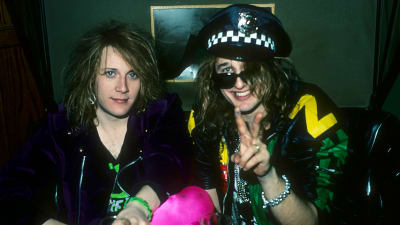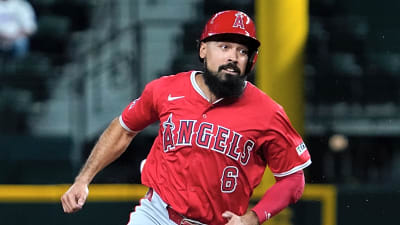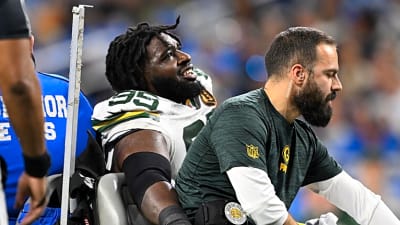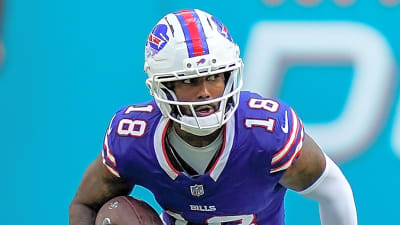
If you somehow missed it, Calgary Flames president of hockey ops Don Maloney set the team’s fanbase ablaze with his against-the-grain comments about the organization’s plan to move forward after a historically bad start to the season.
Maloney did a rare five-minute interview with Brendan Parker during the first intermission of the Flames duel with the Sabres in Buffalo on Nov. 19. The team’s president was then given an even larger forum to share his thoughts days later, in a 45-minute one-on-one with Eric Francis.
His chat with Francis was published as a two-part Q&A on Sportsnet’s website. (Part one can be found here, and part two here)
We’ve already analyzed part one of Eric Francis’ two-part Q&A with Maloney, in which he made it clear that there is no appetite to take the roster ‘down to the studs’ in an effort to lean into what is already a lost season. He also pushed back on the idea that selecting at the top of the draft is a proven way to acquire game-changing players, while emphasizing the need to continue fostering a winning culture in Calgary.
In part two, Maloney speaks on Craig Conroy’s work as general manager, trading veteran players, and his preferred word to use instead of ‘rebuild’.
To open part two of the Q&A, Maloney was asked to assess the job that general manager Craig Conroy has done:
“I think Craig has been excellent at creating an environment, a culture here of being proud to play in Calgary. I think his biggest strength is his relationship with the players, which is excellent. He cares, and they know he cares. I think the first year was very difficult with the number of good players we had at the end of their contracts. A couple of those guys would probably help us right about now, but we got through that. I think Year 2 was very strong. But again, you want to keep the pressure on each other and why we say we want to be a playoff team. We don’t want to go into the season saying, ‘We want to draft in the top five.’ I don’t want to, in any way, shape or form, be associated with that, because then, why are we doing this? Just to fantasize we’re going to get a star player?”
It’s interesting that he mentions how the guys who were shipped out in the 2023-24 season could “probably help us out right now”. I may be reading into it too much, but it gives off the vibe that he would’ve preferred a different approach with those players, who were all pending UFAs. Otherwise, why mention it?
Those trades netted the Flames countless assets that have bolstered the team’s prospect pipeline and pool of draft picks. It was a no-brainer for Conroy to move off those veterans who, for the most part, had notified management that they weren’t willing to extend in Calgary.
The latter part of that answer exemplifies the disconnect between Maloney’s opinion and that of many fans, who have long been clamouring for the opportunity to “fantasize” about a star player picked at the top of the draft.
The conversation then shifts to the youngsters, and Maloney was asked what the plan is for Matvei Gridin, who started the year with the Flames and now resides with the AHL’s Calgary Wranglers:
“He is in a great spot, and he is a talent. Yeah, he can go down there, turn pucks over, and nobody’s paying attention to him. He’s one of the leading rookie scorers down there. He’s still producing. If you bring him up, he has to play in the top nine. Grid is going to be a terrific player for us down the road, but that might not be until February or March, depending on how he goes and where the team’s at. We have to be more patient. Maybe some people like the idea of throwing all these young players into the league, but then you run into confidence issues. These young guys are used to scoring at every level, then all of a sudden they haven’t touched the puck in two weeks, and they lose their game and their belief. The Celebrinis are the exceptions. Look at even (Connor) Bedard a year ago…and now he’s back to the level he should be.”
An interesting note: A year ago, Bedard finished with as many points (67) as Nazem Kadri, who led the Flames in scoring.
Maloney was then asked if Zayne Parekh’s season is an example of why they shouldn’t rush players into the NHL:
“Zayne is a perfect example. We got a glimpse of him last April, when he came in at the end of the year, and in Game 82 he was terrific. He was dynamic, his skating, his flow, his passing, his getting up ice. It was one game, so I’m guilty of it too. In my mind, I said at the very least he’ll help our power play. But fast forward three or four months later, he has some health issues training, comes into camp and has been playing catch up. And then he loses his confidence, and now he’s just trying to keep his head above water. He’s just not anywhere near the player that we think he will be. Not everybody’s a star overnight. Physically, mentally and emotionally, when he hit this sort of wall he was trying to just figure out, ‘How do I survive in this league, let alone prosper?’ In an impatient world, everybody wants people here now and (to) get them in the lineup and let them fail and grow. We don’t think that’s the right route. We think we need to put them in places to succeed.”
The Flames are rather hesitant to give young players a shot with the big club, their philosophy differs from most other organizations in that regard. It’s clear that the only reason Parekh began the season in the majors was his ineligibility to play in the AHL, as per the CHL-NHL Transfer Agreement.
Despite playing sheltered minutes, Parekh was not necessarily put in a position to succeed over the course of his 11-game NHL stint. He never had a consistent defensive partner, playing with a mixture of Jake Bean, Brayden Pachal, Joel Hanley and Kevin Bahl.
Gridin and Parekh are still teenagers, so the hesitancy there is understandable, but the same can’t be said for older prospects that have already proven themselves in the minors, like Rory Kerins and William Stromgren, who are 23 and 22 years old respectively.
Maloney’s stated concern with trading veterans is that the team’s youth is not yet ready to be passed the proverbial ‘torch’ from Calgary’s current leadership group. Patience is a virtue in most cases, but at some point, you have to rip the band-aid off and let these players learn and grow at the highest level.
Shifting focus to the Rasmus Andersson trade front, Maloney was asked how the 29-year-old defenceman has handled the situation, knowing that he’ll likely be traded:
“I really do admire how, from Day 1, it has not bothered him. He’s here just to help us win, and that’s been his focus. I do admire it. He’s probably been our best defenceman, or certainly over the last three weeks he’s playing great hockey right now, which is great for him, great for us. Since the 4 Nations and the world championships there’s been growth in him. At some point, if we can’t find something that works for him, and us, then we’ll have to look at alternatives. We know that, but we’re not racing out to do anything, unless it’s something that says, ‘OK, this is something — someone wants to step up.’ And it’s not draft picks, because with anybody who wants Rasmus, in all reality, their draft pick would be in the 20s to 32nd. It’d be different if you said yeah, you’re guaranteed a top-three or top-five pick.“
Maloney’s keeping his cards close to his chest, reiterating that they want to sign Andersson, and I believe him. They’ve remained firm on their messaging, as though to let interested buyers know that they’ll really have to pay up to pry him loose.
In terms of how Andersson feels about all this, is it possible that he is remarkably comfortable because he has complete control over the situation? If he wants to remain in Calgary, he knows there is an extension waiting for him, maybe not at the exact term or dollar amount he’s seeking, but nonetheless, it’s on the table. If he wants to be moved, they’ll move him, and he’ll essentially control where he ends up. So it’s no surprise, at least to me, that he seems totally cool with the whole thing.
When asked what word he’d use to describe what the organization is doing right now instead of “rebuild,” Maloney picked “retool”:
“I think a retooling is more accurate, but that was started two years ago when we traded all those really good NHL players. There’s a new mindset going forward. You think of the last few years when Tre (Brad Treliving) and Darryl (Sutter) were here, we were going for it. We gave up picks and we acquired players, and unfortunately we didn’t have the playoff success that you would like. We’re in a different phase now, but we still think we can be a competitive team. We can fight for playoff spots as we grow the franchise.”
I find the whole debate over the terminology silly. Former CSEC president and CEO John Bean once went as far as to say, “I’m not ever allowed to use the word rebuild” at a press conference in 2023. Does it really matter what word they use? Will it really create a palpable difference in fan interest?
I suppose the executives understand the ramifications of certain terminology better than I do. Still, it was bizarre to watch Maloney stumble over his words in an attempt to backtrack after saying the wrong word during his live interview with Brendan Parker.
The last bit of that response sums up the interview in its entirety. He seems determined to remain in the playoff mix while simultaneously building towards the future. This is an incredibly difficult line to walk. How competitive can you be when you’re trying to plan for the future, especially when most of the teams that truly have Stanley Cup aspirations have, conversely, leveraged much of the future to improve their current roster? It’s a near-impossible feat in a league where you’re either in or you’re out.
On the other hand, how do you expect to build towards the future if your goal is to always remain competitive? The growing pains that are inherent with a rebuild, retool, re-whatever are not conducive to winning in the now. The Flames have reached the playoffs in consecutive years just once since 2009, and it’s this line of thinking that has contributed to that.
There is no secret shortcut. There is just one tried and true path to the ultimate prize.
This interview, as a whole, leaves a lot open for interpretation. You can choose to interpret the things that he said in any way you’d like. You can also interpret whether or not he’s being totally truthful in his answers. Maloney didn’t necessarily say a lot while saying nothing at all, like some executives have learned to do masterfully, but he also leaves a lot of topics open for debate.
If one things for certain, he didn’t do much in the way of putting fans at ease. He never articulated a clear vision for the team moving forward, outside of saying “We prefer a Dallas (Stars) model,” or “We’re hoping to have a little pop in momentum going into the new building.”
We don’t often hear from Maloney, and with the way this has gone over, it may be a while before we hear from him again.
More must-reads:
- Avalanche are best team in NHL, and their staggering numbers prove it
- Overtaxed Tyrese Maxey spends off day at National Dog Show
- The 'Turkey Leg/Galloping Gobbler winners' quiz
Breaking News
Trending News
Customize Your Newsletter
 +
+
Get the latest news and rumors, customized to your favorite sports and teams. Emailed daily. Always free!








